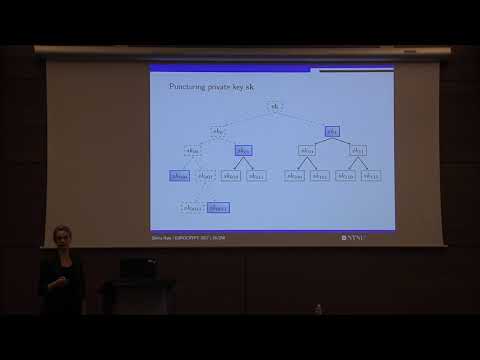Welcome to the resource topic for 2017/223
Title:
0-RTT Key Exchange with Full Forward Secrecy
Authors: Felix Günther, Britta Hale, Tibor Jager, Sebastian Lauer
Abstract:Reducing latency overhead while maintaining critical security guarantees like forward secrecy has become a major design goal for key exchange (KE) protocols, both in academia and industry. Of particular interest in this regard are 0-RTT protocols, a class of KE protocols which allow a client to send cryptographically protected payload in zero round-trip time (0-RTT) along with the very first KE protocol message, thereby minimizing latency. Prominent examples are Google’s QUIC protocol and the upcoming TLS protocol version 1.3. Intrinsically, the main challenge in a 0-RTT key exchange is to achieve forward secrecy and security against replay attacks for the very first payload message sent in the protocol. According to cryptographic folklore, it is impossible to achieve forward secrecy for this message, because the session key used to protect it must depend on a non-ephemeral secret of the receiver. If this secret is later leaked to an attacker, it should intuitively be possible for the attacker to compute the session key by performing the same computations as the receiver in the actual session. In this paper we show that this belief is actually false. We construct the first 0-RTT key exchange protocol which provides full forward secrecy for all transmitted payload messages and is automatically resilient to replay attacks. In our construction we leverage a puncturable key encapsulation scheme which permits each ciphertext to only be decrypted once. Fundamentally, this is achieved by evolving the secret key after each decryption operation, but without modifying the corresponding public key or relying on shared state. Our construction can be seen as an application of the puncturable encryption idea of Green and Miers (S&P 2015). We provide a new generic and standard-model construction of this tool that can be instantiated with any selectively secure hierarchical identity-based key encapsulation scheme.
ePrint: https://eprint.iacr.org/2017/223
Talk: https://www.youtube.com/watch?v=2vNCBsCBbYU
See all topics related to this paper.
Feel free to post resources that are related to this paper below.
Example resources include: implementations, explanation materials, talks, slides, links to previous discussions on other websites.
For more information, see the rules for Resource Topics .
